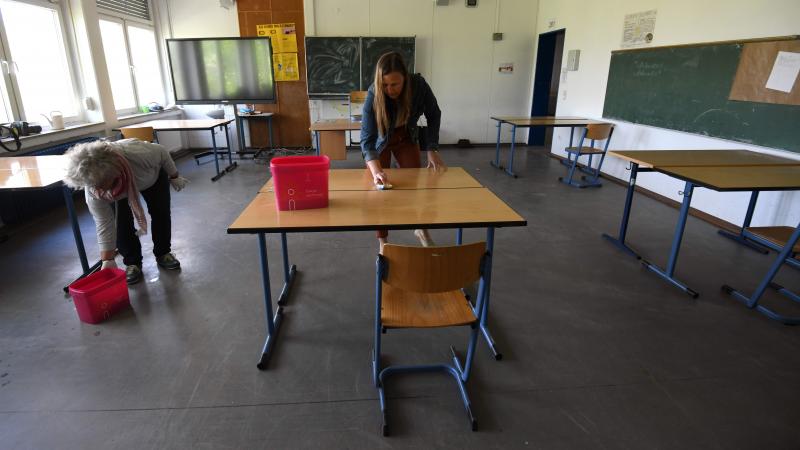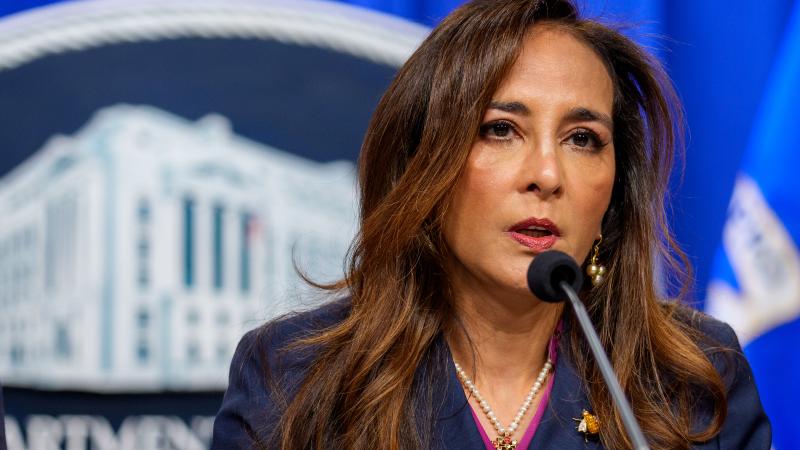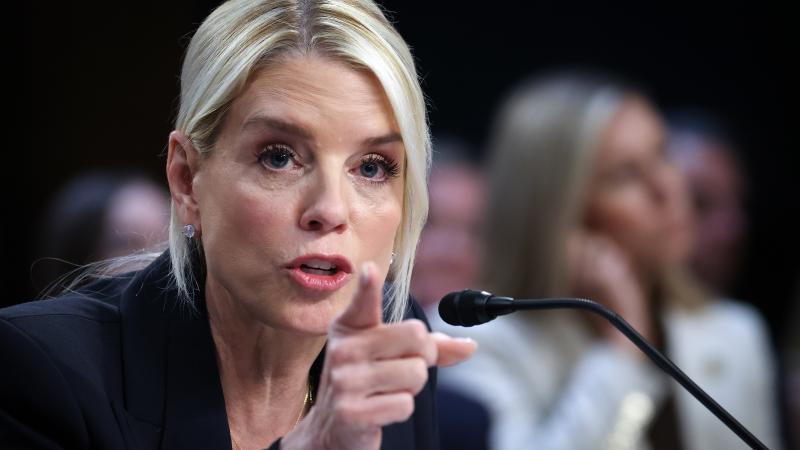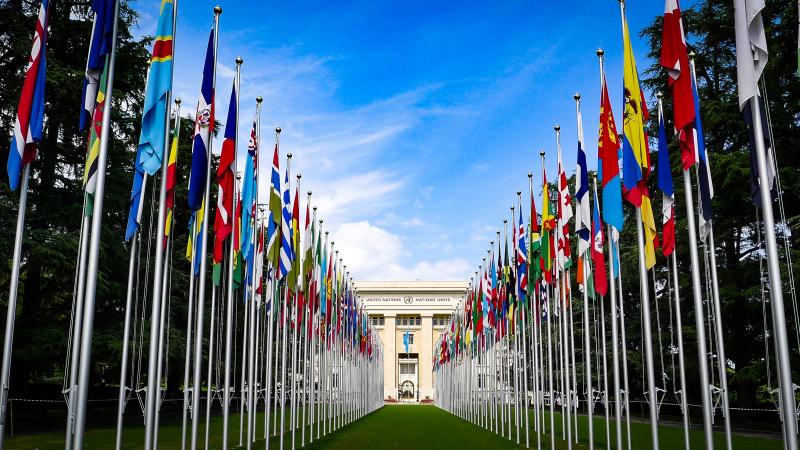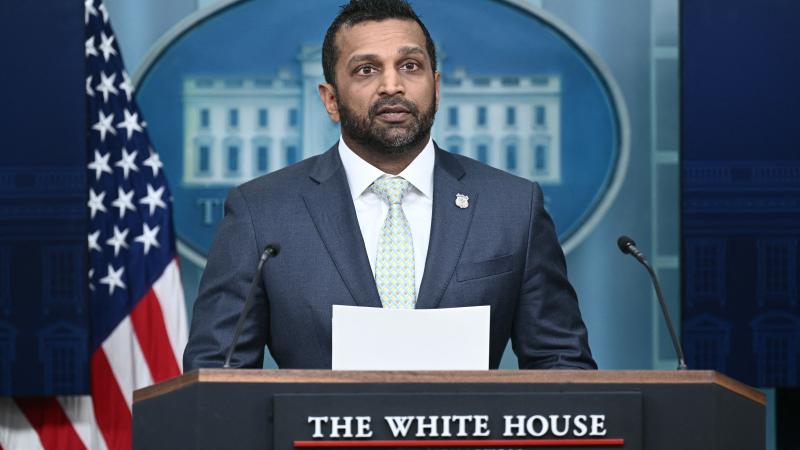DEI Hard: Ohio State diversity payroll, China funding scrutinized as alum JD Vance becomes veep
The Buckeyes have the biggest DEI payroll among 10 public institutions Open the Books reviewed for forthcoming report, taxpayer transparency watchdog says.
Ohio State University clobbered top-ranked Oregon in the Rose Bowl Game Wednesday. Now it faces a bigger threat: the Republican-dominated Legislature and alumnus JD Vance, expected to be an unusually powerful vice president in the next administration.
Taxpayer transparency watchdog Open the Books sacked the Buckeyes in a report Monday on its diversity, equity and inclusion bureaucracy, including 201 employees with "DEI-related roles" who last year cost $13.3 million, which it said could pay in-state tuition for 1,000 students.
OSU's foreign funding includes $15.8 million from China since 2013, which that year snuck a spy into OSU to exfiltrate research funded by American taxpayers. Song Guo Zheng escaped notice until he tried to flee back to China seven years later and went to prison for making false statements to the feds for an "immunology research fraud scheme."
It also gobbled up more than $3 billion from the feds since 2020 – $2.6 billion as grants, half from the Department of Health and Human Services – for programs and research such as rock climbing for Girls* (female and nonbinary teens), overcoming Western resistance to insect protein and factors behind whether and when people sought COVID-19 vaccines.
It received a National Science Foundation grant for "curating and authenticating information in the presence of misinformation during crises," through NSF's Convergence Accelerator for "societal impact" and its Track F for "Trust & Authenticity in Communication Systems," the subject of a Foundation for Freedom Online report two years ago.
This is the first in "a series of reports on 10 public schools and their malign outside influences – DEI investment, foreign donations and progressive federal grants," Open the Books said.
Spokesperson Christopher Neefus clarified to Just the News in an email tha the self-described nonprofit "transparency" group will actually "release a bigger oversight report of 10ish schools when we finish" but the OSU report was released individually "in the interim. Seemed timely given the Vance connection!"
Benjamin Johnson, OSU's assistant vice president for Media and Public Relations, questioned the watchdog's sources for the university's DEI employee count, a subject of widespread speculation whose figures "have all been produced without the university’s input or guidance," in an email.
Most of the expenses include required spending for more than 7,000 students with disability-related academic accommodations, "Title IX and other compliance-related programs," as well as "retention, persistence and graduation" for students including rural and parenting and "research grants, third party gifts and student scholarships," Johnson told Just the News.
DEI beat a hasty retreat in 2024 in public higher education, with Inside Higher Ed reporting that three new states each banned DEI offices and mandatory diversity statements in admissions and hiring, while universities in others shuttered DEI offices preemptively.
The Chronicle of Higher Education's tally is seven state systems with DEI office bans and five with bans on diversity statements in hiring and admission, enacted in 2024 or earlier.
Some of the biggest names in corporate America in 2024 also ditched DEI at least in name, with Walmart becoming the largest scalp yet for conservative activist Robby Starbuck.
Costco's Christmas present to the DEI consulting class was fighting back against a shareholder proposal that would require the progressive price club to "report on the risks of maintaining DEI efforts" in light of corporate discrimination lawsuits that followed the Supreme Court's 2023 ruling against racial preferences in college admissions.
It was submitted by the National Center for Public Policy Research, known recently for securing an injunction against the Securities and Exchange Commission's approval of Nasdaq's diversity board quotas, which a federal appeals court called "a public-shaming penalty for a corporation’s failure to abide by the Government’s diversity requirements."
Costco embraces equity, a euphemism for "equality of outcome," and still employs a chief diversity officer, "picks suppliers based on their race and sex," donates to DEI organizations and "appears to factor in race and sex in hiring and promotion," NCPPR alleges.
This amounts to 200,000 potential victims of discrimination in Costco's ranks who are "white, Asian, male or straight," and "even if only a fraction" were to sue and fewer still "prove successful, the cost to Costco could be tens of billions of dollars."
Costco's board responded that its "critical" DEI efforts "remind and reinforce with everyone at our Company the importance of creating opportunities for all" and "enhance our capacity to attract and retain employees who will help our business succeed."
It said "a diverse group of employees helps bring originality and creativity to our merchandise offerings, promoting the 'treasure hunt' that our customers value," and "helps to provide insights into the tastes and preferences of our members," many of whom like to see employees with their race and sex when shopping. Supplier-base diversity does the same.
The board conclusorily dismissed the proposal's legal risk assessment, which noted a $25 million jury award for a Starbucks employee fired for being white, and said Costco makes "all decisions" on hiring and employment terms "without unlawful discrimination" on the basis of protected traits or even "political ideology or expression."
'We spent on DEI, they were working on STEM-related knowledge'
OSU is "not exactly where you’d expect to find a hub of DEI-related activity" but Open the Books' investigation found it has the highest DEI payroll among the 10 public institutions it studied, the report says.
The biggest DEI earners at just under $300,000 each are Chief Diversity Officer James More and Office of Institutional Equity Associate Vice President Keesha Mitchell, whose office employs the 10th biggest earner, a "compliance specialist," at just under $150,000.
Another 29 employees below More and Mitchell earn six figures, topping out at the associate dean for diversity, inclusion, and outreach at $269,260. The report's spreadsheet categorizes employees by title, cost center, "hierarchy," base pay, bonus, overtime and other payment.
The Office of Diversity and Inclusion employs 90 including 14 who "receive small stipends," Mitchell's office employs 32, and women's gender and sexuality studies employs 26 faculty and specialists whose top two earners exceed $173,000 and $157,000, the report says.
OSU gave the watchdog its nearly 48,000-employee payroll in a public records production, and Open the Books scoured it for "DEI-related terms," the group said.
Its federal grants and contracts "don’t include government-backed student loans or tax breaks on OSU’s $7.9 billion endowment," and Open the Books emphasized OSU accepted federal COVID-19-related relief funds rejected by other rich schools.
While most of OSU's $203.5 million in foreign donations since 2013 came from "friendly" countries, led by Japan and Switzerland, China came in the middle of the pack. Sources tied to Saudi Arabia donated another $7.7 million to OSU, which has an Alumni Club of Saudi Arabia, the report notes.
OSU's Office of International Affairs has a "China Gateway Students and Scholars" program for career opportunities in China and a China Career Fair, which "also improves Ohio State’s brand as a global university," and its business college connects them to Chinese internships.
Convicted researcher Zheng's misappropriation of a National Institutes of Health grant "illustrates the motivation to gain influence and access to American academia," Open the Books said. "While we spent on DEI, they were working on getting STEM-related knowledge."
While OSU spokesperson Johnson questioned the source of the report's foreign donations tally, Open the Books said it is publicly available Department of Education data that universities must report under federal law.
The university "values diversity of thought, protects freedom of expression and works to foster a welcoming environment for Ohioans from every community in this state," Johnson wrote.
"Ohio State is dedicated to groundbreaking research and innovative solutions to real-world problems and impact," follows related federal guidelines and regulations and "expects all members of the university to adhere to the highest standards of research integrity in order to protect the accuracy and reliability of the research record and published results free from any outside influence," he said.
Its Long-Term Investment Pool "contains endowments funded by private gifts, strategic investments by the university and funds that the university has saved to protect the financial health of the university and Wexner Medical Center," which "generate nearly $50 million annually for student scholarships and cover the cost of other priorities that might otherwise be borne by tuition and tax dollars," he also said.
The Facts Inside Our Reporter's Notebook
Links
- Open the Books sacked the Buckeyes in a report
- in-state tuition
- went to prison for making false statements
- rock climbing for Girls*
- overcoming Western resistance to insect protein
- whether and when people sought COVID-19 vaccines
- National Science Foundation grant
- Foundation for Freedom Online report
- Inside Higher Ed reporting
- The Chronicle of Higher Education's tally
- Walmart becoming the largest scalp
- conservative activist Robby Starbuck
- fighting back against a shareholder proposal
- National Center for Public Policy Research
- securing an injunction against the Securities and Exchange Commission
- $25 million jury award for a Starbucks employee
- report's spreadsheet
- OSUâs $7.9 billion endowment
- China Gateway Students and Scholars
- universities must report under federal law
- related federal guidelines and regulations
- Long-Term Investment Pool



